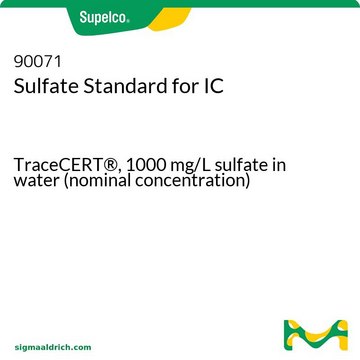All Photos(1)
About This Item
Linear Formula:
(CH3)2C=NOH
CAS Number:
Molecular Weight:
73.09
Beilstein/REAXYS Number:
1560146
EC Number:
MDL number:
UNSPSC Code:
12352100
PubChem Substance ID:
NACRES:
NA.02
Recommended Products
grade
purum
Quality Level
assay
≥98.0% (GC)
bp
135 °C (lit.)
mp
59-61 °C
60-63 °C (lit.)
density
0.901 g/mL at 25 °C (lit.)
functional group
amine
oxime
SMILES string
C\C(C)=N/O
InChI
1S/C3H7NO/c1-3(2)4-5/h5H,1-2H3
InChI key
PXAJQJMDEXJWFB-UHFFFAOYSA-N
Looking for similar products? Visit Product Comparison Guide
Related Categories
signalword
Danger
hcodes
Hazard Classifications
Acute Tox. 4 Dermal - Carc. 2 - Eye Dam. 1 - Flam. Sol. 2 - Skin Sens. 1B
Storage Class
4.1B - Flammable solid hazardous materials
wgk_germany
WGK 3
flash_point_f
Not applicable
flash_point_c
Not applicable
ppe
Eyeshields, Gloves, type N95 (US)
Choose from one of the most recent versions:
Already Own This Product?
Find documentation for the products that you have recently purchased in the Document Library.
Customers Also Viewed
Stefanie Zorbas-Seifried et al.
Molecular pharmacology, 71(1), 357-365 (2006-10-20)
The presence of cis-configured exchangeable ligands has long been considered a prerequisite for antitumor activity of platinum complexes, but over the past few years, several examples violating this structure-activity relationship have been recognized. We report here on studies with the
C Kohl et al.
Carcinogenesis, 13(7), 1091-1094 (1992-07-01)
The hepatocarcinogenicity of acetoxime has been tentatively linked with its metabolic oxidation to the potent genotoxicant and carcinogen propane 2-nitronate (P2-N). In order to test the hypothesis that acetoxime is metabolized to P2-N, the oxime (20 mM) was incubated with
R S Sodum et al.
Chemical research in toxicology, 10(12), 1420-1426 (1998-01-23)
Previously, the secondary nitroalkane 2-nitropropane, a strong hepatocarcinogen in rats, had been shown to induce the formation of 8-aminoguanine in both DNA and RNA of rat liver through a sulfotransferase-mediated pathway. This pathway was postulated to convert the carcinogen into
S S Mirvish et al.
Journal of the National Cancer Institute, 69(4), 961-962 (1982-10-01)
Acetoxime was tested for carcinogenicity by chronic administration in the drinking water to male and female outbred MRC-Wistar rats. The dose of 1.0 g/liter was administered 5 days/week for 18 months (total dose, 6.2--7.0 g/rat). The test compound induced benign
P Kreis et al.
Carcinogenesis, 21(2), 295-299 (2000-02-05)
The industrial solvent 2-nitropropane (2-NP) is a genotoxic hepatocarcinogen in rats. The genotoxicity of the compound in rats has been attributed to sulfotransferase-mediated formation of DNA-reactive nitrenium ions from the anionic form of 2-NP, propane 2-nitronate (P2N). Whether human sulfotransferases
Our team of scientists has experience in all areas of research including Life Science, Material Science, Chemical Synthesis, Chromatography, Analytical and many others.
Contact Technical Service




